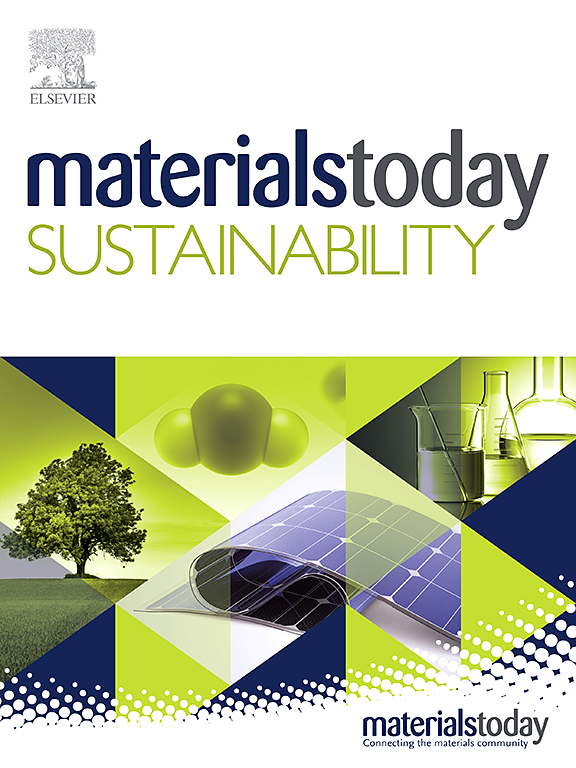Opportunities and challenges in utilizing of 3D printing technology review; Case study in the state of Qatar industry
IF 7.9
3区 材料科学
Q1 GREEN & SUSTAINABLE SCIENCE & TECHNOLOGY
引用次数: 0
Abstract
The strategic blueprint outlined by Qatar National Vision 2030 (QNV 2030) underscores the pivotal role of the manufacturing and energy sectors in the nation's economic expansion and diversification efforts. Central to this vision is Qatar's ambition to ascend as a global leader in natural gas, leveraging its abundant reserves for monetization and expansion. Concurrently, a concerted effort is underway to augment the manufacturing industry, presently valued at approximately $21 billion USD. Recent data from the Ministry of Commerce underscores the sector's robust growth, marked by the inauguration of numerous factories and the introduction of a plethora of new products during Q4 of 2022. The integration of additive manufacturing technology, colloquially known as 3D printing, has emerged as a strategic imperative within Qatar's manufacturing strategy. This initiative seeks to elevate existing export platforms across various materials, including plastics, polymers, and aluminum, thereby unlocking novel avenues for additive manufacturing. This paper delves into the contemporary advancements in additive manufacturing, examining market dynamics across international, regional, and local landscapes. Furthermore, it elucidates the inherent advantages, challenges, and prerequisites for integrating 3D printing technology into Qatar's energy sector. Drawing from empirical evidence and scholarly discourse, the study underscores the transformative potential of additive manufacturing across diverse applications within the energy domain, ranging from process intensification to the production of non-critical spare parts. Despite burgeoning interest, Qatar's current ecosystem lacks a cohesive strategy for the widespread adoption of 3D printing technology within the energy-intensive manufacturing sector. This deficiency is primarily attributed to a dearth of scientific acumen and skilled human capital. Moreover, logistical constraints pertaining to the procurement of printing supplies pose additional hurdles to the technology's mainstream integration.
3D打印技术应用的机遇与挑战卡塔尔工业现状案例研究
卡塔尔2030年国家愿景(QNV 2030)概述的战略蓝图强调了制造业和能源部门在国家经济扩张和多元化努力中的关键作用。这一愿景的核心是卡塔尔成为全球天然气领导者的雄心,利用其丰富的储量进行货币化和扩张。与此同时,一项共同努力正在进行中,以扩大制造业,目前价值约为210亿美元。商务部最近的数据强调了该行业的强劲增长,其标志是2022年第四季度众多工厂的落成和大量新产品的推出。增材制造技术的整合,俗称3D打印,已经成为卡塔尔制造业战略中的一项战略要求。该倡议旨在提升现有的各种材料出口平台,包括塑料、聚合物和铝,从而为增材制造开辟新的途径。本文深入研究了增材制造的当代进展,研究了国际、区域和当地的市场动态。此外,它阐明了将3D打印技术整合到卡塔尔能源部门的固有优势、挑战和先决条件。根据经验证据和学术论述,该研究强调了增材制造在能源领域各种应用中的变革潜力,从工艺强化到非关键备件的生产。尽管对3D打印技术的兴趣日益浓厚,但卡塔尔目前的生态系统缺乏一个连贯的战略,无法在能源密集型制造业中广泛采用3D打印技术。这一缺陷主要是由于缺乏科学头脑和熟练的人力资本。此外,与采购印刷用品有关的后勤限制对该技术的主流整合构成了额外的障碍。
本文章由计算机程序翻译,如有差异,请以英文原文为准。
求助全文
约1分钟内获得全文
求助全文
来源期刊

Materials Today Sustainability
Multiple-
CiteScore
5.80
自引率
6.40%
发文量
174
审稿时长
32 days
期刊介绍:
Materials Today Sustainability is a multi-disciplinary journal covering all aspects of sustainability through materials science.
With a rapidly increasing population with growing demands, materials science has emerged as a critical discipline toward protecting of the environment and ensuring the long term survival of future generations.
 求助内容:
求助内容: 应助结果提醒方式:
应助结果提醒方式:


